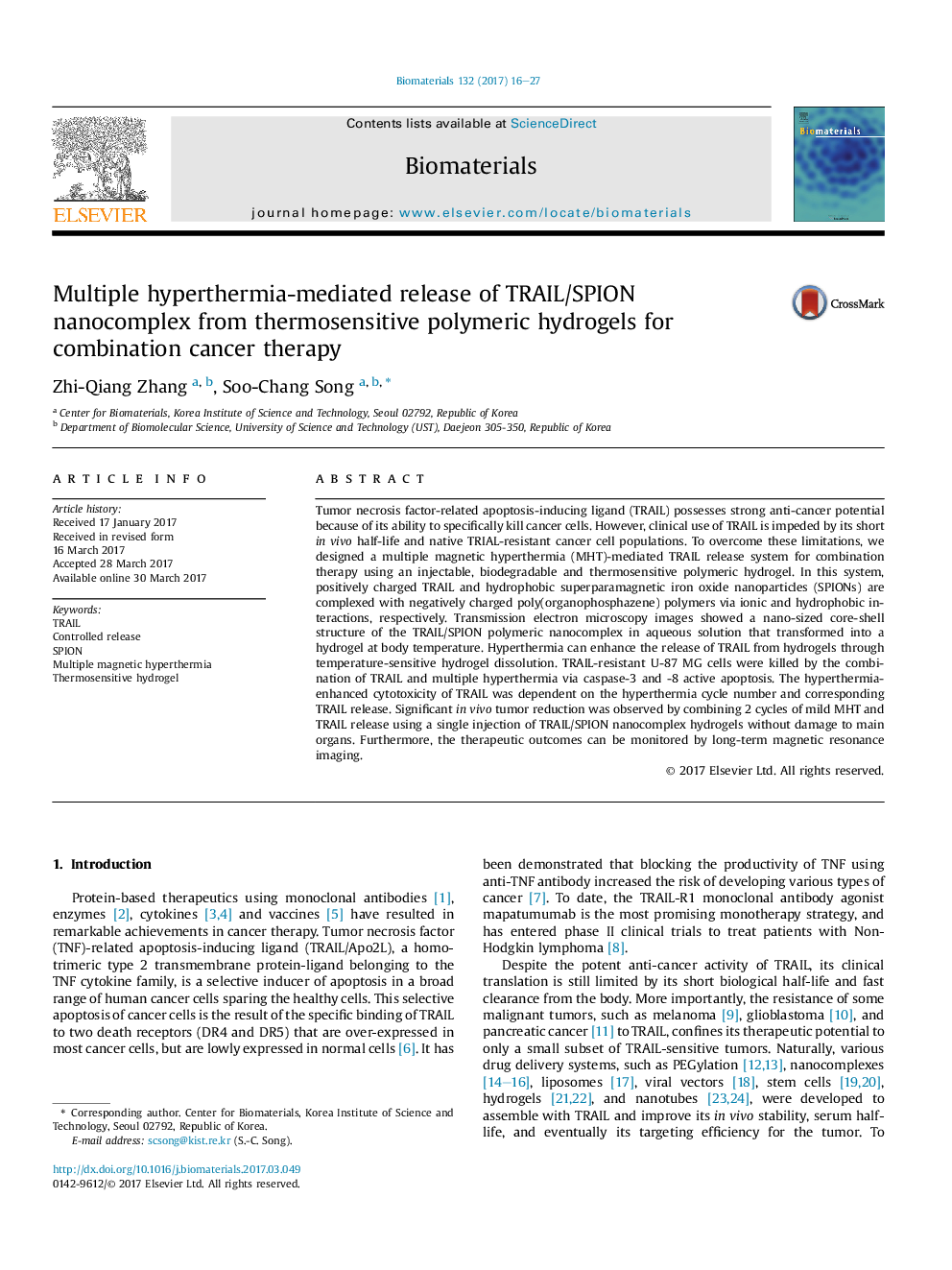| کد مقاله | کد نشریه | سال انتشار | مقاله انگلیسی | نسخه تمام متن |
|---|---|---|---|---|
| 4752389 | 1416135 | 2017 | 12 صفحه PDF | دانلود رایگان |

Tumor necrosis factor-related apoptosis-inducing ligand (TRAIL) possesses strong anti-cancer potential because of its ability to specifically kill cancer cells. However, clinical use of TRAIL is impeded by its short in vivo half-life and native TRIAL-resistant cancer cell populations. To overcome these limitations, we designed a multiple magnetic hyperthermia (MHT)-mediated TRAIL release system for combination therapy using an injectable, biodegradable and thermosensitive polymeric hydrogel. In this system, positively charged TRAIL and hydrophobic superparamagnetic iron oxide nanoparticles (SPIONs) are complexed with negatively charged poly(organophosphazene) polymers via ionic and hydrophobic interactions, respectively. Transmission electron microscopy images showed a nano-sized core-shell structure of the TRAIL/SPION polymeric nanocomplex in aqueous solution that transformed into a hydrogel at body temperature. Hyperthermia can enhance the release of TRAIL from hydrogels through temperature-sensitive hydrogel dissolution. TRAIL-resistant U-87 MG cells were killed by the combination of TRAIL and multiple hyperthermia via caspase-3 and -8 active apoptosis. The hyperthermia-enhanced cytotoxicity of TRAIL was dependent on the hyperthermia cycle number and corresponding TRAIL release. Significant in vivo tumor reduction was observed by combining 2 cycles of mild MHT and TRAIL release using a single injection of TRAIL/SPION nanocomplex hydrogels without damage to main organs. Furthermore, the therapeutic outcomes can be monitored by long-term magnetic resonance imaging.
Journal: Biomaterials - Volume 132, July 2017, Pages 16-27